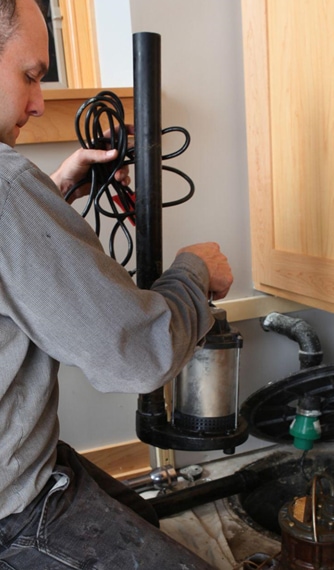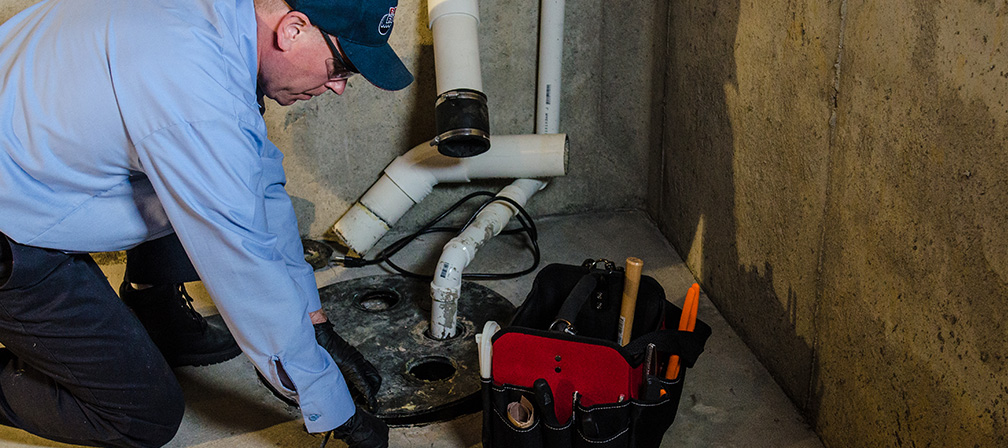How do you actually feel with regards to Keep Your Sump Pump Clean, It'll Keep You Dry?

Sump pumps are crucial components in several homes, especially in locations vulnerable to flooding or too much dampness. They aid prevent water damages by effectively getting rid of excess water from basements or crawl spaces. Nevertheless, like any other home appliance, sump pumps call for routine upkeep to guarantee they operate effectively when needed one of the most. Cleaning your sump pump is a vital part of its maintenance, and understanding exactly how to do it appropriately can save you from expensive fixings and potential catastrophes.
Introduction
Maintaining a clean sump pump is important for its correct functioning and longevity. Ignoring this vital task can result in obstructions, breakdowns, and inevitably, water damages to your building. Therefore, discovering how to clean a sump pump is important for house owners who rely upon these tools to keep their cellars dry and protected.
Signs of a Dirty Sump Pump
Understanding when your sump pump requires cleansing is important for protecting against potential malfunctions. Some usual indicators that indicate a dirty sump pump consist of weird sounds throughout procedure, reduced water flow, and noticeable debris in the pit. If you observe any one of these symptoms, it's vital to clean your sump pump immediately to avoid any kind of additional concerns.
Planning for Cleansing
Prior to you start cleansing your sump pump, it's vital to take some safety preventative measures. Beginning by turning off the power to the pump to stay clear of any electrical crashes. In addition, wear proper safety gear, such as handwear covers and safety glasses, to secure yourself from dirt, particles, and possible pathogens.
Recognizing the Sump Pump
Prior to diving right into the cleaning procedure, it's essential to have a basic understanding of just how a sump pump works. Typically mounted in a pit or container below the basement flooring, a sump pump includes several crucial elements, consisting of a pump, a float switch, and a discharge pipeline. When water collects in the pit, the float button activates the pump, which then pumps the water out through the discharge pipe, away from the structure's structure.
Step-by-step Overview to Cleaning a Sump Pump
Turning off the Power
Begin by detaching the power supply to the sump pump to stop any mishaps while cleaning.
Looking For Proper Functioning
Prior to re-installing the pump, execute a quick test to make certain that the float button activates the pump correctly. Put some water into the sump pit and observe the pump's procedure. If whatever is operating appropriately, you can reassemble the pump and reconnect the power supply.
Eliminating Debris and Dirt
Make use of a pail or an inside story to get rid of any noticeable debris, dirt, or sediment from the sump pit. Dispose of the particles correctly to avoid it from clogging the pump or the discharge pipeline.
Cleansing the Pump and Float Switch Over
Once the pit is free from debris, meticulously get rid of the pump from the pit. Evaluate the pump and the float button for any indicators of damage or wear. Make use of a soft brush or fabric to cleanse the surface areas and remove any type of built up gunk.
Purging the System
After cleansing the pump and float button, purge the sump pit with tidy water to get rid of any kind of staying dirt or sediment. This will certainly aid ensure that the pump runs efficiently and successfully.
Upkeep Tips to Keep Your Sump Pump Clean
In addition to routine cleaning, there are several upkeep pointers you can follow to maintain your sump pump in ideal problem:
Conclusion
Cleaning your sump pump is a critical aspect of its maintenance and makes sure that it runs effectively when you need it the most. By complying with the actions laid out in this overview and including routine upkeep into your regimen, you can prolong the life-span of your sump pump and shield your home from water damage.
6 STEPS ON HOW TO CLEAN A SUMP PUMP PROPERLY
UNDERSTANDING SUMP PUMPS
Your sump pump plays a crucial role in protecting your home by managing and removing excess water. It primarily functions as a “shield”, guarding your basement against the damaging effects of water accumulation. The pump is housed in a sump pit in the lowest part of your basement, and its job is to pump out any water that collects there.
During heavy rainfalls or when snow melts rapidly, water can infiltrate your basement, posing potential risks like flooding, structural damage, and harmful mold growth. Here, the sump pump springs into action, pumping out the intruding water and directing it away from your home.
SAFETY FIRST
Before cleaning, remember to prioritize safety. Disconnect the sump pump from the power source to prevent any accidental electric shocks. Also, wear sturdy gloves to protect your hands from any sharp or dirty components within the pump.
REMOVE THE SUMP PUMP
After ensuring your safety, the next step is to remove the sump pump from its pit. Doing this might require careful maneuvering as you don’t want to damage any pump components. Once removed, clean the sump pit to remove any accumulated debris or sludge.
INSPECT THE PUMP
Inspect the pump for any visible signs of wear or damage. Check the power cord, float switch, and impeller housing. If any components look worn out or damaged, consider replacing them to ensure optimal performance.
CLEAN THE PUMP
Thoroughly clean the pump with warm, soapy water. Make sure to rid it of any dirt, gravel, or other debris that might impede its performance. You can use a toothbrush to clean the small, hard-to-reach parts of the pump.
REINSTALL THE SUMP PUMP
Reinstall the pump into the sump pit Make sure it’s positioned correctly to remove the water effectively Once it’s back in place, reconnect it to the power source TEST THE PUMP
Finally, pour some water into the pit to ensure the pump works correctly. It should start automatically and begin pumping out the water; if it doesn’t, check the power source and the positioning of the pump.
Remember, while cleaning your sump pump is an essential part of home maintenance, hiring a professional plumber for a thorough inspection and cleaning at least once a year is also important. This will ensure that your pump is in optimal condition, ready to protect your home from potential water damage.
BEST PRACTICES FOR CLEANING SUMP PUMP DISCHARGE PIPES
Regular Inspection: Regularly inspect your discharge pipes, especially during heavy rainfall or snowmelt periods. Look for any signs of blockage or damage. Early detection of problems can prevent serious issues down the line. Periodic Cleaning: Over time, sediment and debris can accumulate in the discharge pipes, impeding the flow of water. Regular cleaning helps keep the pipes clear and functioning efficiently. You can use a high-pressure water jet to effectively clean the pipes. Insulation During Winter: In colder climates, discharge pipes can freeze, blocking the outflow of water. Protect your discharge pipes from freezing temperatures by insulating them with foam pipe insulation. This will ensure the sump pump can continue to discharge water even in freezing conditions. Proper Positioning: The discharge pipe should be positioned to direct water away from your home’s foundation. Improper positioning can lead to water seeping back into the basement. Ensure the pipe is long enough and angled correctly. Installation of a Check Valve: A check valve prevents water from flowing back into your sump pit after the pump has pushed it out. Installing a check valve helps maintain the efficiency of your sump pump and reduces the risk of flooding. Minimize Pipe Turns: Every curve or turn in the discharge pipe can decrease the efficiency of water flow. By minimizing turns and bends in your discharge pipe, you can increase the efficiency of your sump pump. https://www.fullspeedplumbing.com/how-to-clean-a-sump-pump-properly9999/

I discovered that article about Cleaning & Maintenance Tips for Your Home's Sump Pump while doing a search on the internet. Enjoyed reading our content? Please share it. Let someone else discover it. Thanks for your time spent reading it.
Book Instantly